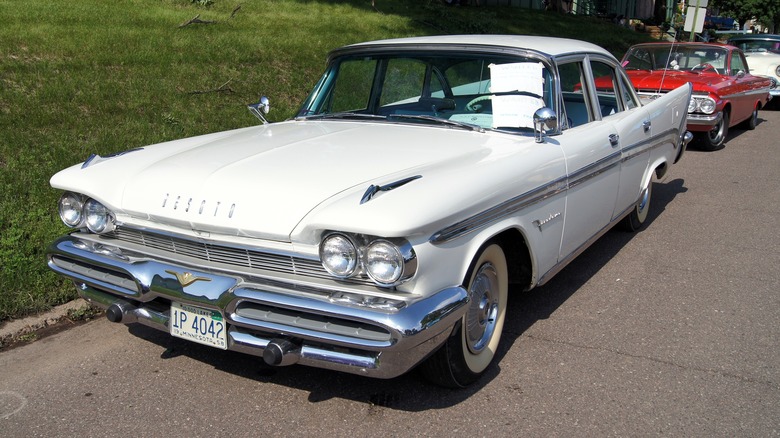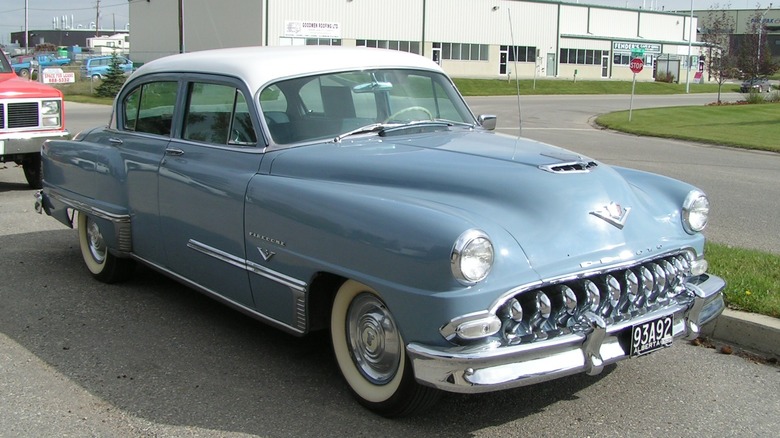Everything You Need To Know About DeSoto Hemi Engines
Chrysler was founded in 1925 when Walter Chrysler reorganized the assets of the foundering Maxwell Motors Company and reformed it in West Virginia under his own name. Three years later, Chrysler bought Dodgeand established the Plymouth and DeSoto brands at the lower end of the automobile market. Neither of the latter brands is around today; the Plymouth badge was retired in 2000, and DeSoto went to the crusher after the 1961 model year. Before its demise, however, DeSoto earned a place in automotive history with its version of Chrysler's fabled hemi engine.
The hemi gets its name from the domed shape of the combustion chambers inside its eight cylinders. The arched area at the top of the cylinder where the spark plug is placed allows for a rapid ignition of the fuel-air mixture and helps keep energy focused more directly on the heads of the pistons. Chrysler first used a hemi V8 in 1951 models, and added it to the DeSoto line the following year. While the DeSoto plant had some of the least horsepower among major hemi engines, it was also one of the first popular hemis, setting a pattern for high-performance luxury for years to come.
[Featured image by Greg Gjerdingen via Wikimedia Commons|Cropped and scaled|CC-By 2.0]
The DeSoto hemi grew steadily over the years
The first DeSoto hemi had a displacement of 276 cubic inches and produced 160 horsepower. Dubbed the "Firedome," it went under the hood of DeSoto's new model of the same name. The Firedome got a modest 10hp boost in 1954, but the following year a 291 cubic-inch Firedome hemi that made 185hp was introduced. DeSoto's hemi engine continued to grow steadily as the years went on, and in 1956 a DeSoto Fireflite powered by a 330cubic-inch V8 was chosen as the pace car for the Indianapolis 500.
Although the stock 1956 Fireflite model weighed nearly 4,300 pounds, its 255hp hemi gave it a 0-60 time of just over 10 seconds, a respectable time for any American car in 1956 that wasn't a first-generation Chevy Corvette.
DeSoto's hemi grew to 345 cubic inches in 1957, when DeSoto added the Firesweep and Adventurer options to its lineup. Both were steps up in power: The Firesweep could manage 295hp, while the Adventurer's two four-barrel carburetors cranked it up to 345. That cut the latter's 0-60 time to under seven seconds and gave it a top speed of 126 mph. In 1958, DeSoto gave up on the hemi in favor of Chrysler's new 350 and 361 B series V8s and customers began to back away from the brand. In just three years, it would vanish into the scrap heap of automotive history. Today, the hemi-powered Firesweep and Adventurer rank among the rarest classic Mopars you'll likely never see on the street.
[Featured image by dave_7 via Wikimedia Commons|Cropped and scaled|CC-By 2.0]

